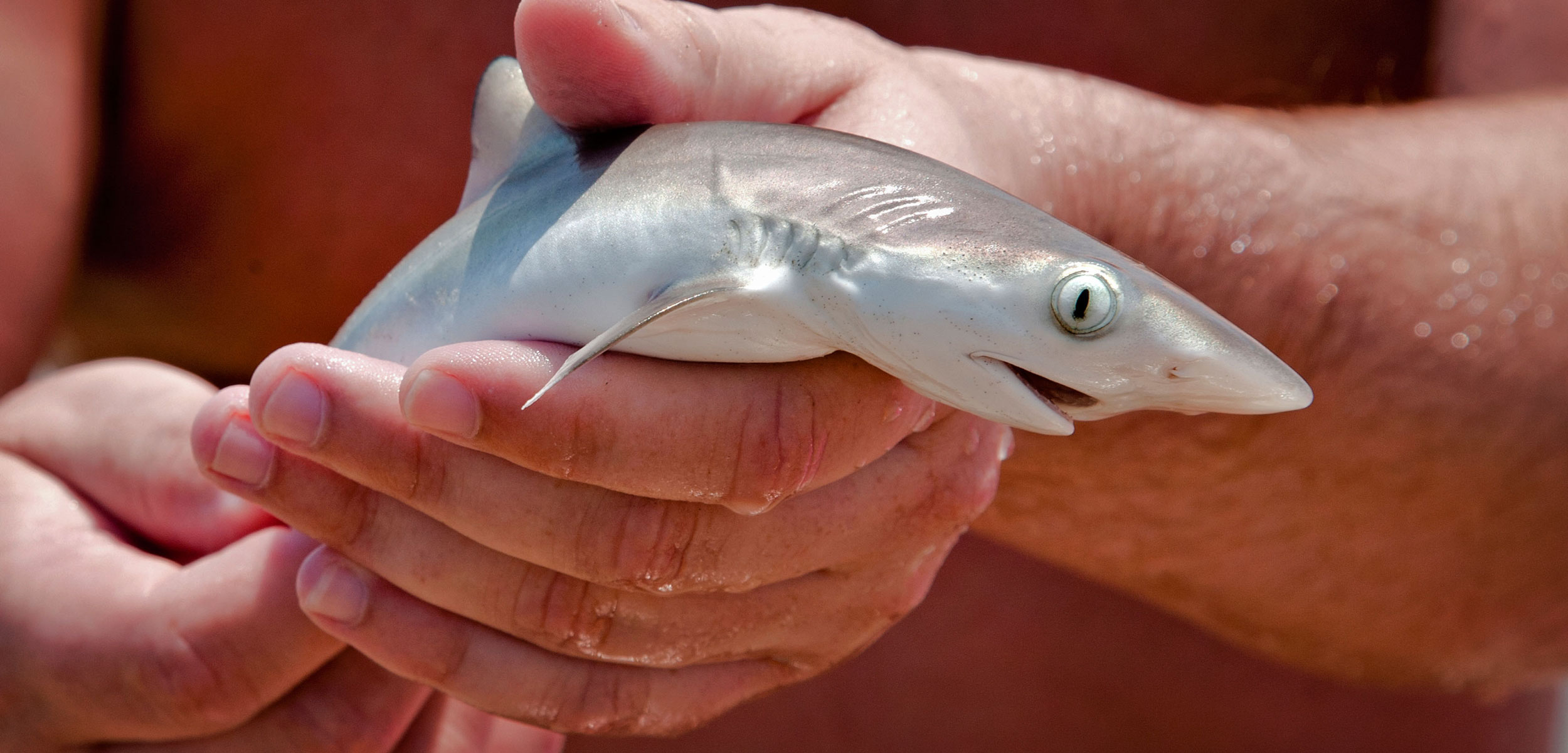Getting Caught Can Induce Labor in Sharks and Rays
The lost offspring could be affecting the health of vulnerable populations.
Article body copy
Picture this: you’re on board a fishing boat, extracting a hook from a female Atlantic stingray when a tiny, writhing tail suddenly emerges from her cloacal vent. You press her white belly, and new life squirms beneath your fingertips. A bit more pressure and—pop!—out slips a baby ray, no larger than a saucer, followed moments later by a sibling. You flip the babies into the sea and off they swim. Congratulations: you’re a ray midwife.
Unfortunately, this miraculous moment came at the rays’ expense. Those adorable babies were born too early, and they’re probably doomed. Their mother won’t bear another litter for a year. You’ve just provoked capture-induced parturition: spontaneous birth, usually premature, triggered when the ray was caught and handled. Now, a new review suggests that such fishing-induced births are more common among elasmobranchs (sharks and rays) than scientists realized—and the phenomenon could affect the conservation of some rare species.
Scientists have long known that some sharks and rays that give birth to live offspring (as opposed to those that lay eggs) are prone to going into labor when caught. “A female [angel shark], of a considerable size, taken from our net, gave 15 to 20 pups,” wrote the French zoologist Antoine Risso in 1810, before adding, “due to lack of water, it was asphyxiated.”
In the two centuries since Risso’s observation, though, biologists have learned little about the phenomenon. Why does it occur? Which species are susceptible? Could it be impairing populations?
The review, spearheaded by Kye Adams, a doctoral candidate at Australia’s University of Wollongong, attempts to address those questions. Adams and his colleagues perused hundreds of scientific papers for accounts of capture-induced births among sharks and rays. They also scoured YouTube, Instagram, and Facebook for references to shark and ray births. Their searches turned up a grisly trove of videos: newborn sixgill sharks flopping on a boat in Florida; baby bluntnose stingrays wriggling loose in North Carolina; a dying eagle ray delivering in the parking lot of a California diner.
“It was a little bit morbid watching them all,” Adams says.
Between scientific and anecdotal records, Adams found that at least 88 live-bearing elasmobranch species will occasionally experience capture-induced parturition—12 percent of all such sharks and rays. The scientists found that species experience induced labor at different rates. While just two percent of pregnant spinner sharks delivered upon capture, 85 percent of blue stingrays spilled their offspring. Across all live-bearing species, around a quarter of pregnant females lost their pups.
Adams still isn’t sure why spontaneous birth happens, but he has theories. Perhaps it helps babies escape their dying mother to swim another day, he says, or maybe females eject pups to distract predators and facilitate their own getaways. Others, however, suspect that the behavior is simply the result of a stress hormone overload that causes the animals to lose control of their bodily functions. “It costs a lot of energy to develop young,” says Austin Gallagher, chief scientist of Beneath the Waves, a nonprofit focused on shark and ocean conservation. “I don’t know if aborting them would make evolutionary sense.”
Given that the overwhelming majority of premature pups die, are fishing-related births affecting shark populations? It’s conceivable. In Australia, for instance, researchers found that more than 80 percent of sharks caught by recreational anglers are tossed back, meaning that over a half-million female sharks per year are put at risk of losing their offspring in the name of sport. Letting sharks go might assuage anglers’ guilt, but evidence suggests that far more sharks die from catch and release than fishermen realize. Capture-induced parturition could be another non-obvious source of loss.
In the grand scheme, it’s unlikely that capture-induced parturition is a major crisis. Humans famously kill as many as 73 million sharks per year for their fins; compared to that carnage, catch-and-release preemies probably amount to a rounding error. “Juveniles still have a high probability of dying before they will give a return in the form of offspring,” points out Nicholas Dulvy, a marine ecologist at Simon Fraser University in Burnaby, British Columbia. In other words, most lost babies wouldn’t have likely contributed to populations anyway.
Yet Adams worries that capture-induced parturition could still pose a subtle threat, especially for critically endangered elasmobranchs like sawfish and angel sharks. For those groups, Adams says “even the loss of a few pups could be pretty concerning.”
Adams has taken the risk of capture-induced parturition to heart, and is erring on the side of caution in his own work. His latest project entails studying the reproduction of the confusingly named banjo shark—a sleek bottom-dwelling ray adorned with rippling white markings. Since catching pregnant females by hook and line could induce premature births, Adams wrangles them by hand and tows them to shore for an ultrasound.
“Like fishermen, scientists who are catching sharks for research need to know that [capture-induced parturition] happens,” Adams says, “and implement strategies to reduce their impact.”

